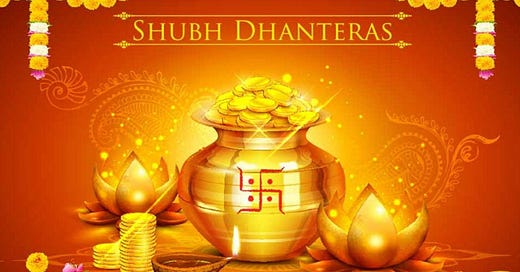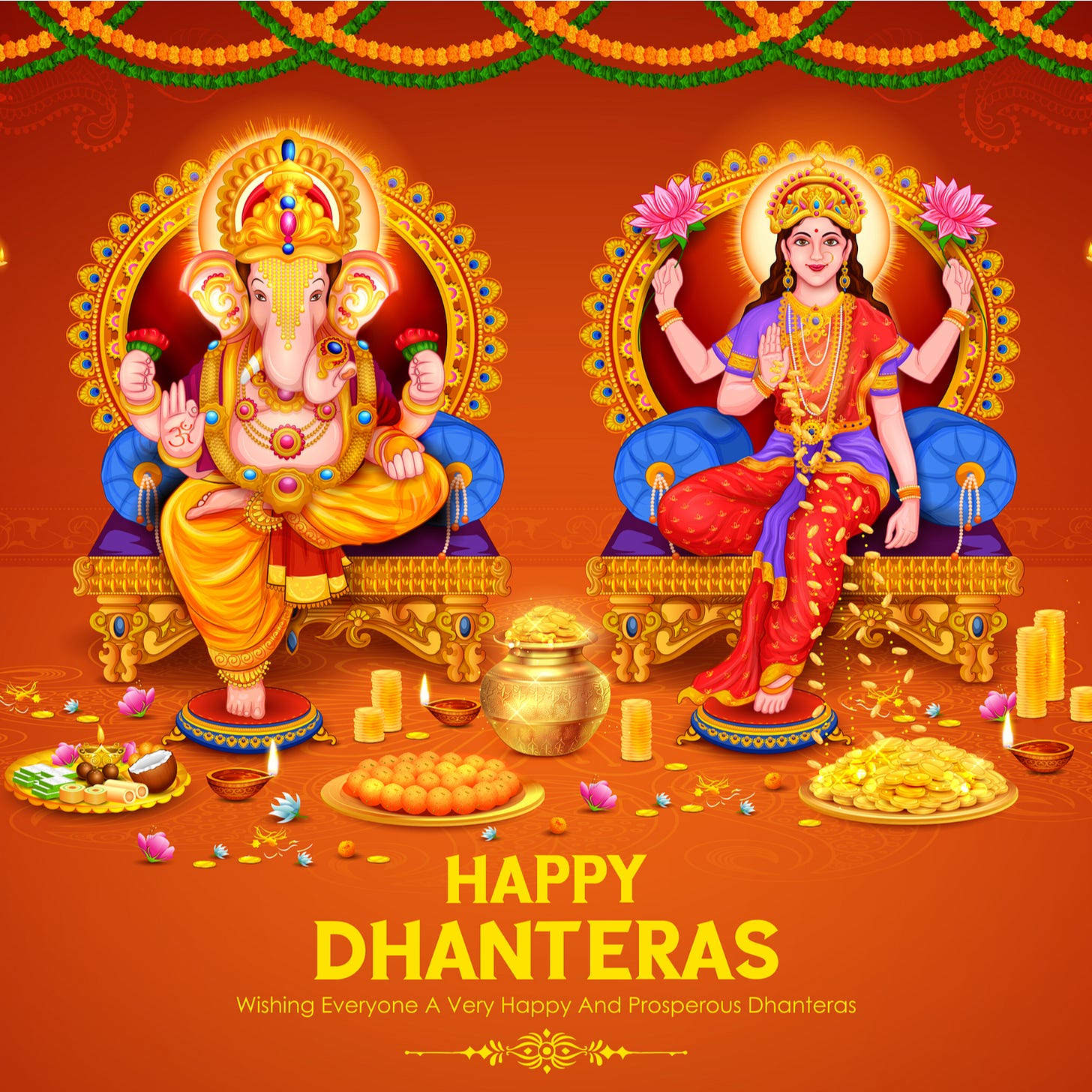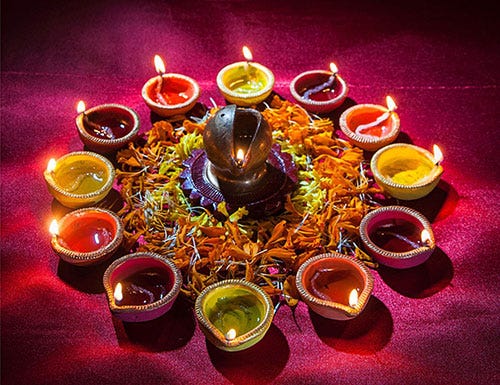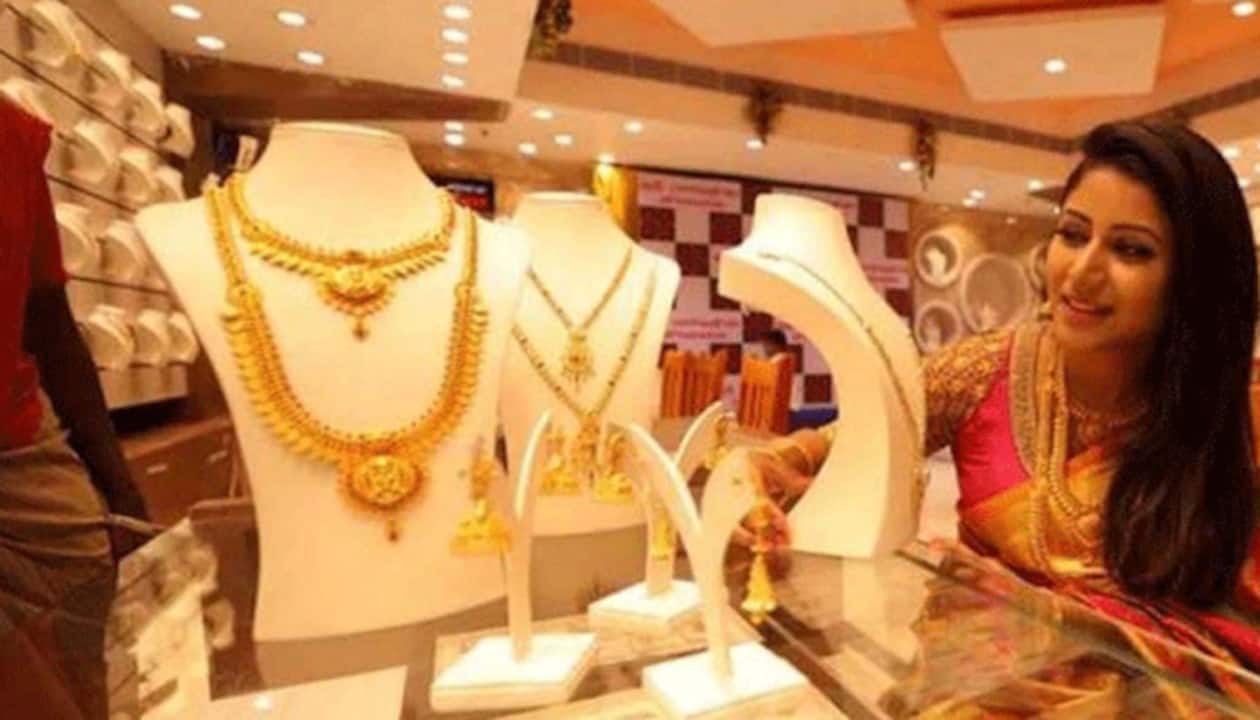Dhan Teras: Make Each Moment of Your Life a "Golden" One
Dhan Teras: Tradition, Significance, and Contemporary Trends.
Dhan Teras: A Prelude to Diwali's Luminescence
Dhan Teras, widely known as Dhantrayodashi, ushers in the luminous festival of Diwali, serving as a harbinger of prosperity and joy. Celebrated two days prior to Diwali, this venerated day is steeped in deep-rooted cultural and spiritual traditions, embodying the rich tapestry of Indian heritage. It marks not just a momentous occasion in the Hindu calendar but also encapsulates a blend of historical significance, ritualistic practices, and an evolving narrative that resonates with contemporary ethos.
As the twilight of Dhan Teras unfolds, it brings with it a symphony of lights, an array of traditions, and a spirit of rejuvenation that paves the way for the grandeur of Diwali. This festival is a confluence of mythological tales, economic activities, and familial bonds, offering a microcosm of India's diverse yet unified cultural panorama. The significance of Dhan Teras transcends the mere ritualistic buying of precious metals; it signifies the sanctity of health, wealth, and prosperity in Indian culture, making it an integral precursor to the Diwali celebrations.
Historical Origin and Mythological Significance
The origins of Dhan Teras are deeply rooted in Hindu mythology and ancient scriptures. One popular legend recounts the story of the god Dhanvantari, an avatar of Lord Vishnu, who emerged during the Samudra Manthan, the churning of the cosmic ocean. He appeared with a jar of Amrita, the elixir of life, symbolizing the birth of Ayurveda and wellness.
Another legend involves King Hima’s son, who was destined to die by a snake bite on the fourth day of his marriage. On that day, his wife piled up gold and silver coins at the entrance of the sleeping chamber and lit lamps all around. She kept her husband awake by narrating stories and singing songs. When Yama, the god of death, arrived in the guise of a serpent, he was blinded by the dazzle of the coins and lamps and left peacefully, sparing the Prince’s life.
Traditional Practices
Traditionally, Dhan Teras is considered an auspicious day for buying gold, silver, and other metals, especially utensils and ornaments. This practice is believed to bring good luck, prosperity, and wealth to the family. It’s also a day when many perform Lakshmi Puja, worshiping the goddess of wealth and prosperity.
In addition to purchasing metals, many people renovate and decorate their homes, light diyas (lamps), and prepare special dishes. The day is marked by a festive spirit, with people donning new clothes and exchanging gifts.
Geographical Spread and Cultural Variations
While Dhan Teras is predominantly celebrated in India, it has also gained popularity among Hindu communities worldwide. Regions across India observe the festival with slight variations in rituals and customs, reflecting the diverse cultural fabric of the country. In western India, particularly in Gujarat and Maharashtra, the festival is celebrated with great fervour. In southern states, the focus might be more on buying new utensils than gold.
Contemporary Trends and Commercialization
In recent years, Dhan Teras has seen a significant transformation, particularly in its commercial aspect. The festival has become synonymous with major shopping sprees, with retailers and businesses offering substantial discounts and special deals, especially on gold and electronic items. This commercialization has led to debates about the dilution of the festival's traditional essence.
The trend of buying gold on Dhan Teras is not just a religious or cultural practice but also reflects the Indian affinity for gold as a valuable asset. India has one of the largest private gold reserves globally, and this festival amplifies the demand for gold, significantly impacting the economy.
Conclusion: Tradition vs. Modern Interpretation
While Dhan Teras continues to be a significant festival symbolizing wealth and prosperity, its modern interpretation raises questions about consumerism and the true essence of tradition. The festival, initially a symbol of health, wealth, and prosperity, has somewhat shifted towards a more materialistic viewpoint in recent years. Nonetheless, it remains a crucial part of the Indian cultural and spiritual calendar, offering a blend of traditional values and contemporary practices.
As we embrace the festive spirit of Dhan Teras, it's essential to reflect on its rich history and cultural significance, balancing tradition with modernity, and ensuring that the essence of the festival remains intact amidst the changing times.








